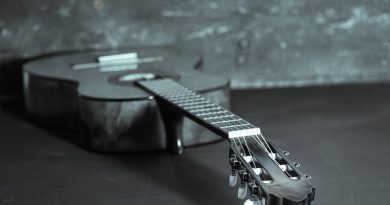Mastering Hammer-Ons and Pull-Offs: A Beginner’s Guide to Guitar Techniques
Mastering Hammer-Ons and Pull-Offs: A Beginner’s Guide to Guitar Techniques
Hammer-ons and pull-offs are essential techniques for any guitarist looking to add depth and dynamics to their playing. These techniques allow you to seamlessly connect notes and create smooth transitions between chords and melodies. In this article, we will cover the basics of hammer-ons and pull-offs, as well as some tips and exercises to help you master these techniques.
1. Understanding Hammer-Ons
A hammer-on is a technique where you use your fretting hand to sound a note without plucking the string with your picking hand. To perform a hammer-on, begin by fretting a note with your first finger on a specific fret. Then, without picking the string again, quickly hammer down onto a higher fret with your second or third finger. This will create a smooth and connected sound between the two notes.
2. How to Practice Hammer-Ons
One of the best ways to practice hammer-ons is to start with a simple exercise. Begin by fretting a note on the first fret of the high E string with your first finger. Then, hammer down onto the third fret with your third finger. Repeat this process on different strings and frets to get comfortable with the technique.
Another useful exercise is to practice hammering on and pulling off between two frets. Start by fretting a note on the first fret of the high E string with your first finger. Then, hammer down onto the third fret with your third finger, and pull off back to the first fret. This will help you develop speed and accuracy with your hammer-ons.
3. Tips for Mastering Hammer-Ons
– Use the tip of your finger to hammer down onto the fret for a clean and powerful sound.
– Practice slowly at first to ensure accuracy and then gradually increase your speed.
– Experiment with different finger combinations and frets to expand your hammer-on repertoire.
– Focus on maintaining consistent pressure with your fretting hand to produce a clear and sustaining note.
4. Understanding Pull-Offs
A pull-off is the opposite of a hammer-on, where you use your fretting hand to sound a note after plucking the string with your picking hand. To perform a pull-off, begin by fretting a note on a specific fret with your first finger. Then, pluck the string with your picking hand and quickly pull off to a lower fret with your second or third finger. This will create a smooth and connected sound between the two notes.
5. How to Practice Pull-Offs
Similar to hammer-ons, practicing pull-offs with a simple exercise can help you develop this technique. Begin by fretting a note on the third fret of the high E string with your third finger. Then, pluck the string with your picking hand and quickly pull off to the first fret with your first finger. Repeat this process on different strings and frets to improve your pull-off technique.
Another helpful exercise is to practice pulling off and hammering on between two frets. Start by fretting a note on the third fret of the high E string with your third finger. Then, pull off to the first fret with your first finger, and hammer down onto the third fret with your third finger. This will help you develop speed and accuracy with your pull-offs.
6. Tips for Mastering Pull-Offs
– Use the tip of your finger to pull off the string for a clear and resonant sound.
– Pull off quickly and forcefully to produce a smooth transition between notes.
– Practice with different finger combinations and frets to enhance your pull-off skills.
– Maintain consistent pressure with your fretting hand to ensure a strong and sustained note.
In conclusion, mastering hammer-ons and pull-offs is essential for any guitarist looking to add depth and dynamics to their playing. By understanding the basics of these techniques, practicing regularly, and following helpful tips, you can improve your hammer-on and pull-off skills and take your guitar playing to the next level. So, grab your guitar, practice these techniques, and start creating beautiful melodies with hammer-ons and pull-offs.






